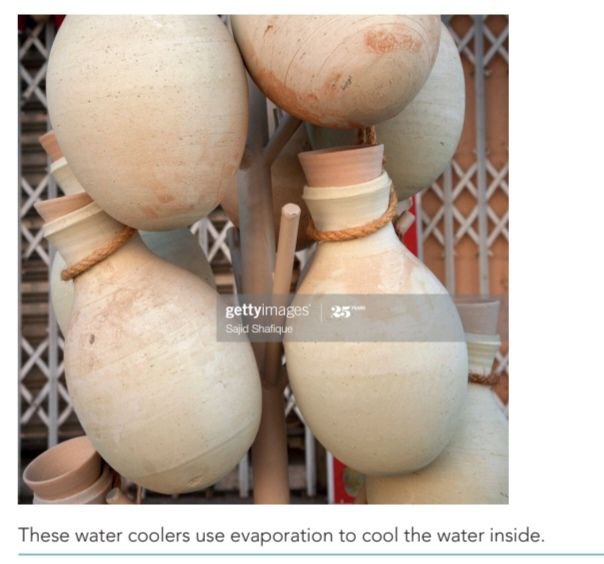Forces & Energy – Density, Heat, Energy Transfer, Evaporation
1/52
Earn XP
Description and Tags
Vocabulary flashcards summarising key terms and definitions from the lecture notes on density, heat vs temperature, energy conservation, thermal energy transfer (conduction, convection, radiation), and cooling by evaporation.
Name | Mastery | Learn | Test | Matching | Spaced |
|---|
No study sessions yet.
53 Terms
Density
Mass per unit volume; calculated as mass ÷ volume (e.g., g/cm³ or kg/m³).
Volume (scientific)
The amount of space an object occupies, measured in units such as cm³ or m³.
Mass
The quantity of matter in an object, measured in grams (g) or kilograms (kg).
Regular Object
A solid whose faces meet at right angles, allowing volume to be found by multiplying its side lengths.
Irregular Object
A solid with unequal sides or angles; its volume is found by water-displacement in a measuring cylinder.
Hollow
Containing an internal space filled with air; the opposite of solid (full).
Solid (full)
Containing no internal air space; completely filled with matter.
Displacement Method
Technique for finding volume of an irregular object by measuring the rise in water level after immersion.
Formula Triangle (Density)
A visual aid showing density = mass ÷ volume, mass = density × volume, volume = mass ÷ density.
g/cm³
Common unit of density when mass is in grams and volume in cubic centimetres.
kg/m³
SI unit of density when mass is in kilograms and volume in cubic metres.
Average Density
Total mass of an object divided by its total volume, including air spaces (e.g., a ship’s overall density).
Float
To stay on the surface of water because the object’s density is less than 1.0 g/cm³.
Sink
To descend in water because the object’s density is greater than 1.0 g/cm³.
Heat (Thermal Energy)
Total energy of vibrating particles in an object, measured in joules (J).
Temperature
Indicates direction of thermal energy transfer and the average particle energy in a substance.
Absolute Zero
Theoretical lowest temperature (–273 °C) where particle motion stops; 0 K on Kelvin scale.
Kelvin (scientist)
Proposed the concept of absolute zero and the Kelvin temperature scale.
Conservation of Energy
Physical law stating energy cannot be created or destroyed, only changed or transferred.
Energy Input
Total energy supplied to a system (e.g., electrical energy entering a lamp).
Energy Output
Total energy leaving a system, including useful and wasted forms (e.g., light + thermal).
Conserved (energy)
When total energy remains the same before and after a process.
Created (energy)
To bring energy into existence—impossible by the conservation law.
Destroyed (energy)
To eliminate energy—also impossible; energy only changes form.
Dissipated Energy
Energy that spreads out into surroundings and becomes less useful, often as heat.
System (physics)
A chosen part of the universe for study of energy changes (e.g., an electric lamp).
Conduction
Transfer of thermal energy by particle vibration collisions, most effective in solids, especially metals.
Conductor (thermal)
Material that conducts heat well (e.g., metals).
Insulator (thermal)
Material that conducts heat poorly, slowing energy transfer (e.g., wool, plastic, foam).
Convection
Transfer of thermal energy by movement of warmer, less dense fluid rising and cooler fluid sinking.
Convection Current
Circular flow pattern in a fluid caused by heating, responsible for distributing heat evenly.
Radiation (thermal)
Transfer of thermal energy by electromagnetic waves; needs no medium and travels through vacuum.
Emit
To give out thermal radiation.
Absorb (radiation)
To take in thermal radiation from hotter objects.
Vigorously
With more energy, speed, and force; describes faster particle vibration when heated.
Expand
Increase in size as particles vibrate faster and take up more space when heated.
Vacuum
Region with no particles; conduction and convection cannot occur, but radiation can pass through.
Black, Dull Surface
Best emitter and absorber of thermal radiation due to color and texture.
Shiny, White / Silver Surface
Poor emitter and absorber; reflects thermal radiation effectively.
Evaporation
Change of state from liquid to gas at temperatures below boiling point when high-energy particles escape.
Boiling
Rapid change from liquid to gas at a fixed temperature where vapor forms throughout the liquid (100 °C for water).
Cooling by Evaporation
Process where escaping high-energy particles lower the average energy, reducing temperature of remaining liquid.
Random (motion)
Unpredictable particle movement directions and speeds in a liquid or gas.

Porous
Containing tiny holes that allow liquid to seep through (e.g., clay water cooler walls).
Perfume
Liquid with weak intermolecular forces that evaporates quickly, producing a cooling sensation.
Liquid Soap
Liquid with stronger particle forces; evaporates slowly, causing less cooling than water.
Conduction Insulation (Vacuum Flask)
Use of a vacuum layer to prevent particle vibration transfer and a silver surface to reflect radiation.
Double-Glazed Window
Two glass panes separated by argon gas layer to reduce conduction and convection heat loss.
Conduction Example – Saucepan
Metal pan conducts heat to food, while plastic or wooden handle insulates user’s hand.
Convection Example – Room Heater
Heater warms air; rising warm air and sinking cool air form convection currents heating the room.
Radiation Example – Sunlight
Thermal energy reaches Earth via radiation, travelling through space’s vacuum in ~9 minutes.
Humidity Effect
High water-vapour content in air slows sweat evaporation, reducing body’s cooling ability.
Helium Gas
Very low-density gas (0.00018 g/cm³) causing balloons to float in air.